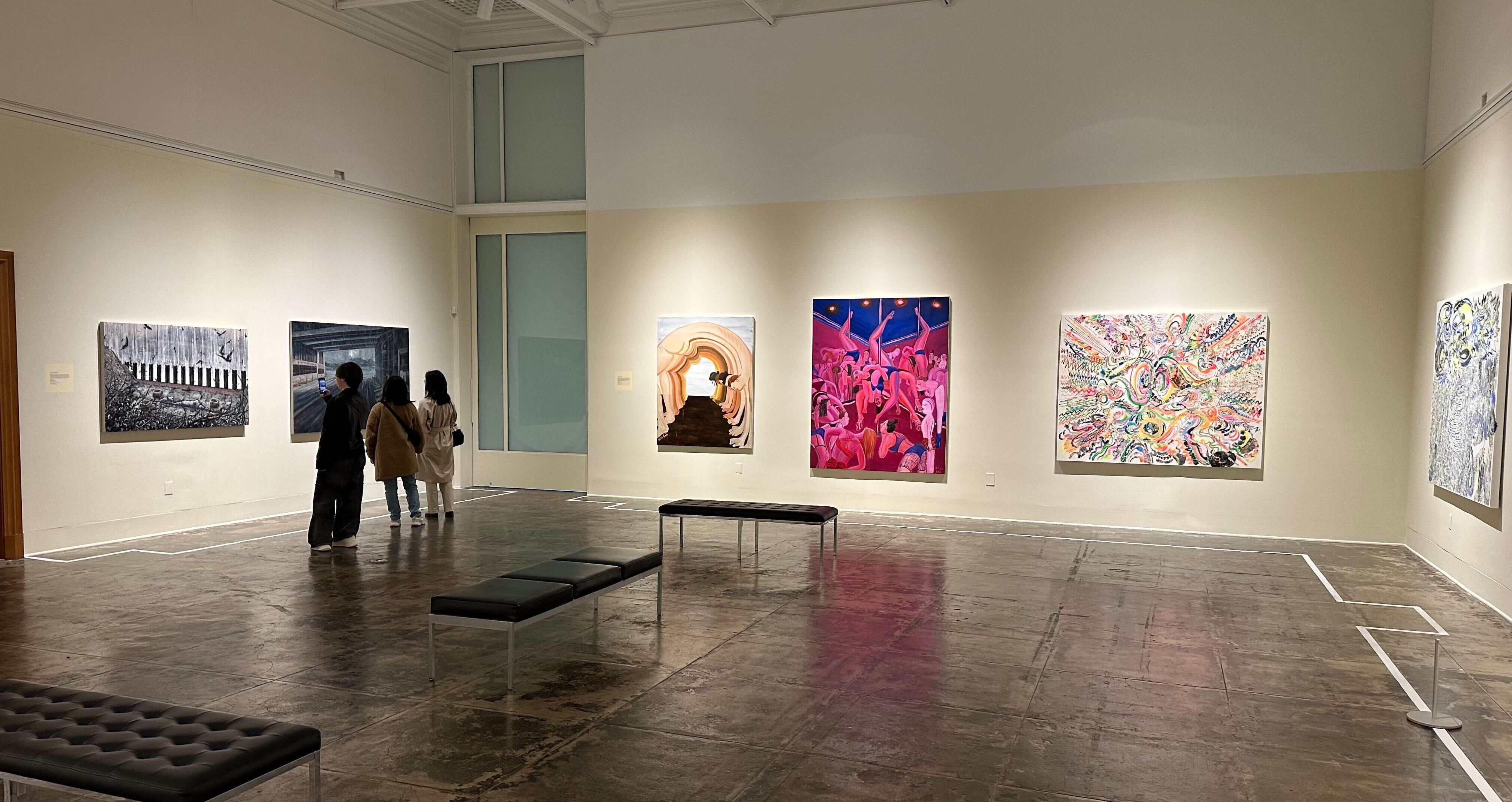Editor’s Note: This article is a review and includes subjective thoughts, opinions and critiques.
Visiting Stanford Art Gallery’s new exhibition “Shifting Fields: Contemporary Chinese Painting” could take you either 10 minutes, or it could take you two hours. A single room featuring 49 works by young up-and-coming artists from mainland China, Hong Kong and Taiwan, the calm space allows the intricate and dazzling artworks to come alive.
Exhibit curator and art practice professor Xiaoze Xie’s exhibit description included a helpful instruction for appreciating the exhibit’s works, which vary in style, subject matter and mood. “I hope the audience will look closely at these works … the points of connection and striking contrasts,” he wrote in the description’s final line.
What stood out most to me was the works’ intricate use of color. For example, Wu Jian’an’s “Scorching Sun No. 2,” which is featured on the exhibit’s poster, includes vibrant neon colors against a white backdrop. This abstract piece somehow manages to represent the exhibit as a whole while also setting itself apart through its electric brightness and distinctive mark making. Around the canvas’s border, there are line forms gesturing inward to what looks like an abstract ball of dynamic energy. When looking at the piece from afar, viewers can take a big-picture perspective on the piece. By zooming in a bit more, however, onlookers can absorb the piece’s intricate details that exist within the larger shapes and figures.
Zhang Ke’s series of four paintings consisting of muted but true-to-life colors are also displayed. These paintings depict lush aspects of nature interwoven with man-made objects including vinyl records, forks and plates. This juxtaposition between the natural and the artificial creates a liveliness within the paintings’ still life form.
In starker contrast to neon abstractions and authentic still lifes, Yan Heng’s sepia-toned series of paintings border on Gothic. I found these paintings to be the most alarming in the collection, in no small part because they depict birds of prey and limbs without bodies, among other things, with a deadened hue. According to the museum label for Yan Heng’s artwork, his pieces “suggest a different time and space removed from reality, and a psychological distance.”
When I say these artworks lend themselves to spending time in observation, I mean it. Though the works range from sizable canvases with bold forms to very small sheets of paper with minimalistic intricacy, each benefits from a closer look. The more time viewers spend with the piece, the more that visual details and different opportunities for interpretation slowly reveal themselves.
The exhibit was introduced as contemporary Chinese painting that draws on Chinese and Western painting traditions. Several works combine traditional techniques with “processes rooted in contemporary social practice” to convey meaning and make social commentary about the “changing reality” of life in China. A striking example is Deng Dafei’s series of portraits made with traditional methods. To find subjects, Deng Dafei stood on street corners, struck up conversations with strangers, photographed them and rendered them using found fragments from demolition sites and millenia-old printmaking techniques. When we step into “Shifting Fields,” we see time-honored techniques used to represent present-day Chinese people and objects; we see artistic forms rooted in tradition encased in a contemporary display.
The painting’s descriptions make clear that they draw on literary influences as well. Hao Liang’s work heavily references “classical themes and motifs in Chinese art and literature,” such as an allusion to the Song Dynasty writer Su Shi’s famous poem, which includes a beautiful landscape and represents nature in flux. Similarly, Cheng Po-Tsung’s miniature painting series “could be interpreted as phrases or lines from a poem.”
“Shifting Fields: Contemporary Chinese Painting” spans time and traditions, and it rewards close observation. Open until March 15, this exhibition offers a conveniently-located way to escape from your busy week and enjoy some unique artwork.
